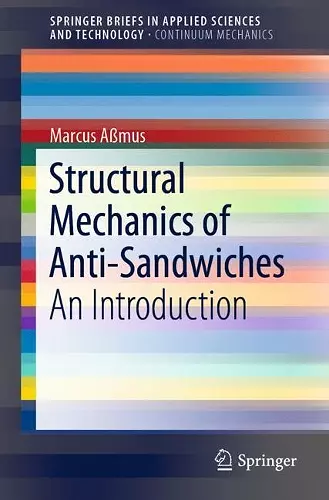Structural Mechanics of Anti-Sandwiches
An Introduction
Format:Paperback
Publisher:Springer Nature Switzerland AG
Published:28th Jan '19
Currently unavailable, and unfortunately no date known when it will be back

This book provides an extensive introduction to the mechanics of anti-sandwiches: non-classical composites with multiple homogeneous layers but widely differing parameters concerning their geometry and materials. Therefore, they require special attention in the context of structural mechanics.
The theoretical framework presented here is based on a five parametric, planar continuum, which is a pragmatic version of the COSSERAT shell. The direct approach used here is enlarged where constraints are introduced to couple layers and furnish a layer-wise theory. Restrictions are made in terms of linearity – geometrical and physical. After having defined appropriate variables for the kinematics and kinetics, linear elastic material behaviour is considered, where the constitutive tensors are introduced in the context of isotropy. The basics are presented in a clear and distinct manner using index-free tensor notation. This format is simple, concise, and practical.
Closed-form solutions of such boundary value problems are usually associated with serious limitations on the boundary conditions, which constitutes a serious disadvantage. To construct approximate solutions, a variational method is employed as the basis for computational procedures where the Finite Element Method is applied. Therefore, the introduction of the vector-matrix notation is convenient. Based on the plane considerations, a finite eight-node SERENDIPITY element with enlarged degrees of freedom is realised. To avoid artificial stiffening effects, various integration types are applied, and the solutions generated are subsequently verified with closed-form solutions for monolithic limiting cases.
Within this setting, it is possible to efficiently calculate the global structural behaviour of Anti-Sandwiches, at least up to a certain degree. The power of the proposed method in combination with the numerical solution approach is demonstrated for several case and parameter studies. In this regard, the optimal geometrical and material parameters to increase stiffness are analysed and the results for the kinematic and kinetic quantities are discussed.
ISBN: 9783030043537
Dimensions: unknown
Weight: unknown
127 pages
2019 ed.